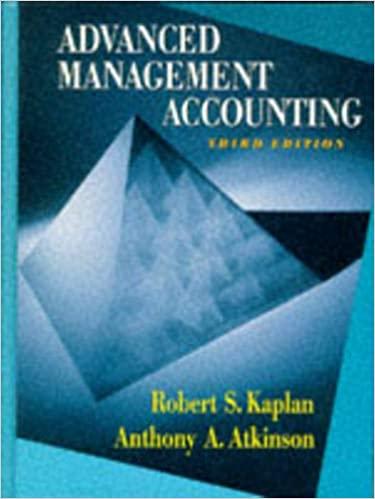Senior Executive Incentive Plan Components [The following is an excerpt from the Definitive Proxy Statement, SEC Form
Question:
Senior Executive Incentive Plan Components
[The following is an excerpt from the Definitive Proxy Statement, SEC Form 14A, filed on March 1 8, 1 997, by FMC Corp.]
The program comprises three different compensation components-base salary, variable cash and stock incentive awards, and long-term incentive awards (stock options).
Base Salary. FMC uses external surveys to set competitive compensation levels (salary ranges) for its executives. In order to obtain the most comprehensive survey data for review, the group of companies in the surveys is broader than the Dow Jones Diversified Industrial Index and includes a majority of comparable companies at the Fortune 500 level.
Performance graph companies are well represented.
Salary ranges for FMC executives are established that relate to similar positions in other companies of comparable size and complexity. Generally, the Company sets its competitive salary midpoint for an executive officer at the median level compared with the companies surveyed. Performance levels within the ranges are delineated to recognize different levels of performance ranging from "learner" or "needs improvement" to "exceptional."
Thus, although compensation is nominally targeted to fall at or. near the 50th percentile of such comparable organizations, it may range anywhere within the salary bracket based on performance.
Starting placement in a salary range is a function of an employee's skills, experience, expertise, and anticipated job performance. Each year, performance is evaluated against mutually agreed-upon objectives and performance standards that may, in large part, be highly subjective; a performance rating is established; and a salary increase may be granted. Performance factors used may include timely responses to downturns in major markets; setting strategic direction; making key management changes; divesting businesses and acquiring new businesses; continuing to improve operating efficiency; and developing people and management capabilities. The relative importance of each of these factors varies based ori the strategic thrust and operating requirements of each of the businesses.
Variable Incentive Award (Annual Bonus). In 1995, the Committee and the Board recommended a revised Management Incentive Plan, which shareholders approved. This revised plan includes annual bonuses for achievement of both individual performance targets and multiyear targets for the improvement of Net Contribution ( operating profit after tax less the product of an 1 1 .5% capital charge and capital employed). All executives participate in this incentive plan. Achievement of high standards of business and individual performance are rewarded financially with both stock and cash, and significant compensation is at risk if these high standards are not met. At the executive level, target incentives approximate 50% to 65% of base salary, while actual payments can range from zero to almost three times target incentive.
The multiyear incentive period uses a three-year net contribution target and began in 1995. In 1997, participants, including all executives, received a draw. against the second three-year award period, which will end on December 3 1 , 1998. The draw is equal in percentage terms to their business performance incentive target (BPF) under the prior plan. Participants' three-year incentive awards, if any, shall be reduced (but not below zero) by the amount of their 1996 and 1997 draws. In the case of Mr. Burt, the draw is equal to 25% of his base salary .
. At the executive levels, the annual individual performance incentive comprises 40%
to 50% of the total target incentive. This incentive is less quantitative than the three-year net contribution incentive. It varies with individual performance and can range from zero to twice the target percentage. It is awarded based on achievement of annual objectives set for the individual's most important business responsibilities. In 1996, these included such disparate objectives as implementation of profit and growth strategies; improvements in operating efficiencies and market positions; acquisitions such as Frigoscandia;
divestiture of FMC Gold Company and the Automotive Service Equipment Division; and demonstrated leadership in enhancing the teamwork, diversity, and management climate necessary to improve shareholder value.
Long-Term Incentive Awards. This plan is designed to link closely the long-term reward of executives with increases in shareholder value. The 1995 approval by the shareholders of an updated stock option plan continues to give the Committee broad discretion to select the appropriate types of rewards. 1996 awards consisted of nonqualified stock options.
The award vesting period is three years, with an option term of 10 years.
To determine the number of options to be granted to an executive, the Committee first multiplies the midpoint of the salary range for an executive's salary grade by a percentage applicable to that grade and consistent with competitive industry practice as provided by an independent, outside consultant and divides that product by the then current market price of FMC's shares. The Committee then applies a percentage (ranging from 80% to 1 20%) based on the individual's contributions and potential. In approving grants under the plan, the number of options previously awarded to and held by executive officers is considered but is not regarded as a significant factor in determining the size of the current option grants.
Stock Retention Policy. The Company has established guidelines setting expectations for the ownership of FMC stock by officers and management. The guidelines for stock retention are based on a multiple of the employee's total compensation midpoint. The revisions to the 1995 Management Incentive and Stock Option Plans included incentives and enhancements to help executives meet these guidelines.
Required Evaluate the structure and nature of the incentive compensation systems used at FMC Corp. for senior executives.
Step by Step Answer:

Advanced Management Accounting
ISBN: 9780132622882
3rd Edition
Authors: Robert S. Kaplan, Anthony A. Atkinson, Kaplan And Atkinson




